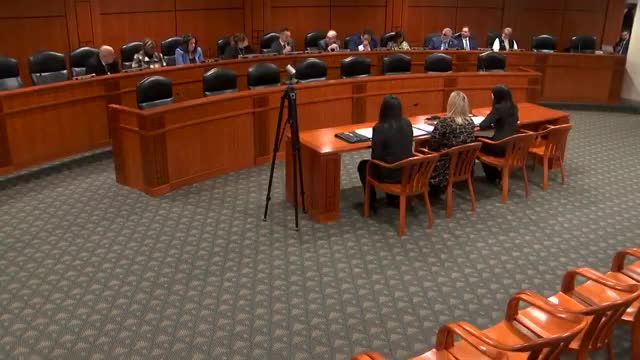Representative Aragon questions MIOSHA's separate rule-making process during presentation
February 20, 2025 | 2025 House Legislature MI, Michigan
This article was created by AI summarizing key points discussed. AI makes mistakes, so for full details and context, please refer to the video of the full meeting. Please report any errors so we can fix them. Report an error »

During a recent meeting of the Michigan House of Representatives, discussions centered around the Michigan Occupational Safety and Health Administration (MIOSHA) and its regulatory processes. The meeting highlighted the distinct procedures MIOSHA follows when adopting rules that align closely with federal regulations.
A key point raised by Representative Aragon involved the rationale behind MIOSHA's separate rule-making process. It was explained that this process is mandated by the Administrative Procedures Act (APA). According to the APA, when MIOSHA adopts a rule that is substantially similar to an existing federal regulation, it is required to follow a streamlined procedure. This includes publishing the proposed rule in the Michigan Register for a period of 35 days, but notably, it does not necessitate a public hearing or a regulatory impact statement.
This discussion is significant as it underscores the balance between state and federal regulatory frameworks, particularly in the context of workplace safety. By having a separate process, MIOSHA can efficiently implement regulations that are already established at the federal level, potentially speeding up the adoption of necessary safety measures for Michigan workers.
The implications of this streamlined process could be far-reaching, affecting how quickly new safety standards are enacted and how businesses in Michigan adapt to these regulations. As the meeting progressed, it became clear that understanding these regulatory nuances is crucial for stakeholders, including employers and employees, who are directly impacted by workplace safety laws.
In conclusion, the meeting shed light on MIOSHA's regulatory framework, emphasizing the importance of efficient rule-making in maintaining workplace safety. As discussions continue, stakeholders will be watching closely to see how these processes evolve and what new regulations may emerge in the future.
A key point raised by Representative Aragon involved the rationale behind MIOSHA's separate rule-making process. It was explained that this process is mandated by the Administrative Procedures Act (APA). According to the APA, when MIOSHA adopts a rule that is substantially similar to an existing federal regulation, it is required to follow a streamlined procedure. This includes publishing the proposed rule in the Michigan Register for a period of 35 days, but notably, it does not necessitate a public hearing or a regulatory impact statement.
This discussion is significant as it underscores the balance between state and federal regulatory frameworks, particularly in the context of workplace safety. By having a separate process, MIOSHA can efficiently implement regulations that are already established at the federal level, potentially speeding up the adoption of necessary safety measures for Michigan workers.
The implications of this streamlined process could be far-reaching, affecting how quickly new safety standards are enacted and how businesses in Michigan adapt to these regulations. As the meeting progressed, it became clear that understanding these regulatory nuances is crucial for stakeholders, including employers and employees, who are directly impacted by workplace safety laws.
In conclusion, the meeting shed light on MIOSHA's regulatory framework, emphasizing the importance of efficient rule-making in maintaining workplace safety. As discussions continue, stakeholders will be watching closely to see how these processes evolve and what new regulations may emerge in the future.
View full meeting
This article is based on a recent meeting—watch the full video and explore the complete transcript for deeper insights into the discussion.
View full meeting
